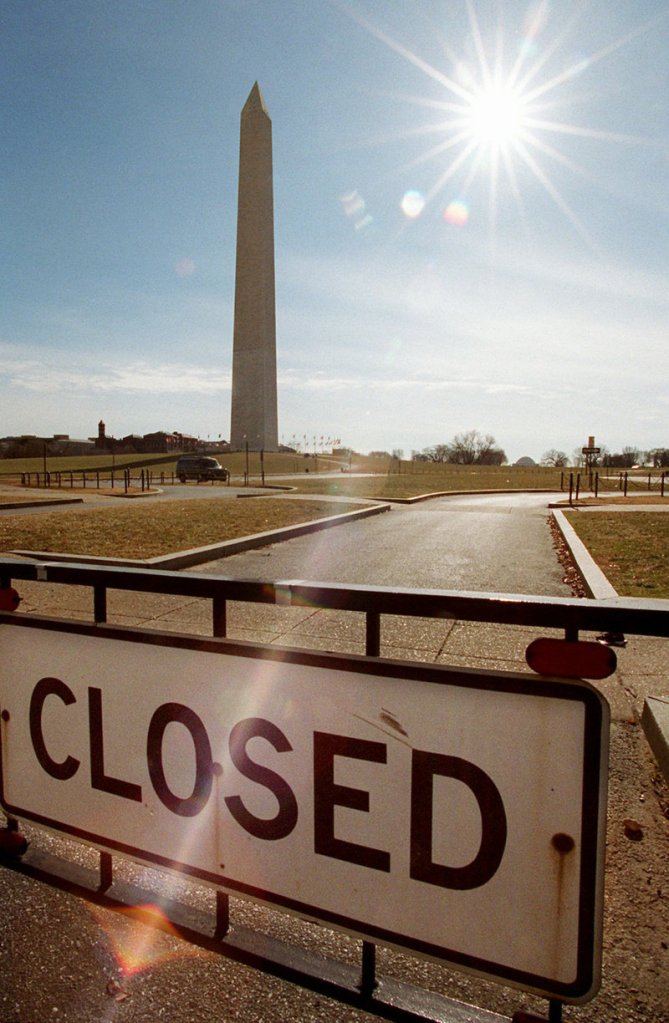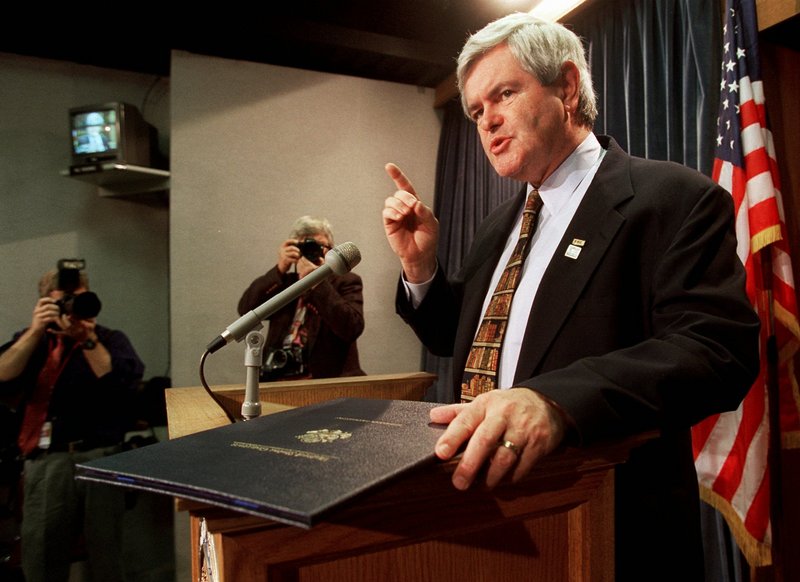WASHINGTON – Few memories haunt Republicans more deeply than the 1995-96 partial shutdown of the federal government, which helped President Clinton reverse his falling fortunes and recast House Republicans as stubborn partisans, not savvy insurgents.
Now, as Congress careens toward a budget impasse, government insiders wonder if another shutdown is imminent – and whether Republicans again would suffer the most blame.
Both parties say they’re determined to avoid a shutdown. But they haven’t yielded on the amount of spending cuts they’ll demand or accept. Meanwhile, shutdown talk is rippling through Washington and beyond.
“It’s good for political rhetoric to talk about a government shutdown. But I don’t know anybody that wants that to happen,” Sen. Tom Coburn, R-Okla., said on “Fox News Sunday.”
Senate officials are spending Congress’ Presidents Day recess week poring over the spending proposal passed by the House early Saturday, according to one Democratic leader. “We are prepared to negotiate right away,” Chuck Schumer, D-N.Y., told CNN’s “State of the Union.”
The Obama administration is warning that workers who handle Social Security benefits might be furloughed. Almost hourly, top Democrats and Republicans accuse each other of pushing the government to the brink by being inflexible.
“I would hope that instead of having ultimatums, we go forward with an approach that talks about how we keep government open,” said House Democratic leader Nancy Pelosi.
The House GOP campaign committee said Democrats are “shouting for a shutdown.”
For all the rhetoric, the actual stakes of a shutdown are not so dire for ordinary Americans. The military would stay active, interstate highways would stay open and government checks would be issued, although applicants for benefits under programs such as Social Security might have their sign-ups delayed.
In fact, the government has had more than a dozen “shutdowns” since 1981. Some lasted only hours, and few are recalled.
The exception is the two-stage partial shutdown of 1995 and 1996. Then, as now, a Democratic president clashed over spending priorities with a recently installed Republican House majority. Then, as now, Congress had failed to fund the government for a full fiscal year, so agencies depended on a series of “continuing resolutions” to keep them in businesses while lawmakers feuded.
When Clinton in late 1995 vetoed a GOP-crafted spending bill – he called it insufficient for health care, education and other programs – parts of the government closed for six days.
After a brief truce, the parties clashed again. Hundreds of thousands of “non-essential” federal workers were furloughed from mid-December to early January. National parks, museums, passport offices and other agencies closed.
Each party blamed the other. But public opinion soon swung toward the Democrats. House Speaker Newt Gingrich didn’t help himself by suggesting he’d triggered the shutdown out of pique because Clinton had made him ride in the back of Air Force One. Friends called it the biggest error of Gingrich’s career.
GOP lore portrays the 1995-96 shutdown as a political disaster. Lawmakers who lived through it have vowed: Never again.
“There’s absolutely no way” House Republicans will allow a shutdown, said Rep. Jerry Lewis of California, first elected in 1978. “It was a big mistake when Newt did it.”
Some political insiders are not convinced that a new shutdown would play out like the last one. Public alarm over the federal debt has grown dramatically in the past decade and a half. And Republicans regained control of the House last fall largely because of candidates who ran on promises to slash spending.
The latest showdown centers on spending for the current fiscal year, which is one-third over. House Republicans have promised to cut $60 billion from “discretionary non-security” programs. Those programs comprise only 12 per cent of the entire budget, and they exclude items such as the military, Social Security and Medicare .
President Obama and congressional Democrats say such cuts would do damage at a time when the economic recovery remains fragile. They want to freeze discretionary, nonsecurity spending at current levels for five years. That would slow or halt the typical annual climb, but Republicans say it’s not enough.
Both parties say they have given as much ground as possible. If something doesn’t change before March 4, when the current funding measure expires, a partial government shutdown could be unavoidable.
The big guessing game is: Who will blink first?
The Democratic-controlled Senate, which has begun a week’s recess, won’t have time before the March 4 deadline to take up the $60 billion cost-cutting bill the House just finished.
In early March, senators will devise a short-term spending proposal likely to reflect the Democrats’ demands to hold spending at current levels. Republican senators could block a vote on the Democrats’ proposal, which probably would trigger a government shutdown.
In the event of a shutdown, some Republican strategists say deficit-weary Americans would blame Democrats for refusing deeper cuts. Democrats say voters would view Republicans as unreasonable obstructionists, as they did 15 years ago. Neither group, however, seems fully confident .
If Senate Republicans let a Democratic-crafted temporary spending bill reach the House, then a big decision will confront Speaker John Boehner and his sometimes unpredictable GOP caucus, particularly its dozens of tea party-backed newcomers.
Senate Majority Leader Harry Reid pounced Thursday when Boehner said Congress must cut spending beyond the levels Democrats have embraced.
“We’re terribly disappointed Speaker Boehner can’t control the votes in his conference,” Reid said. “They’re going to shut down the government.”
Responded Boehner: “The only people in this town rooting for a government shutdown are Nancy Pelosi and Harry Reid.”
Send questions/comments to the editors.




Comments are no longer available on this story